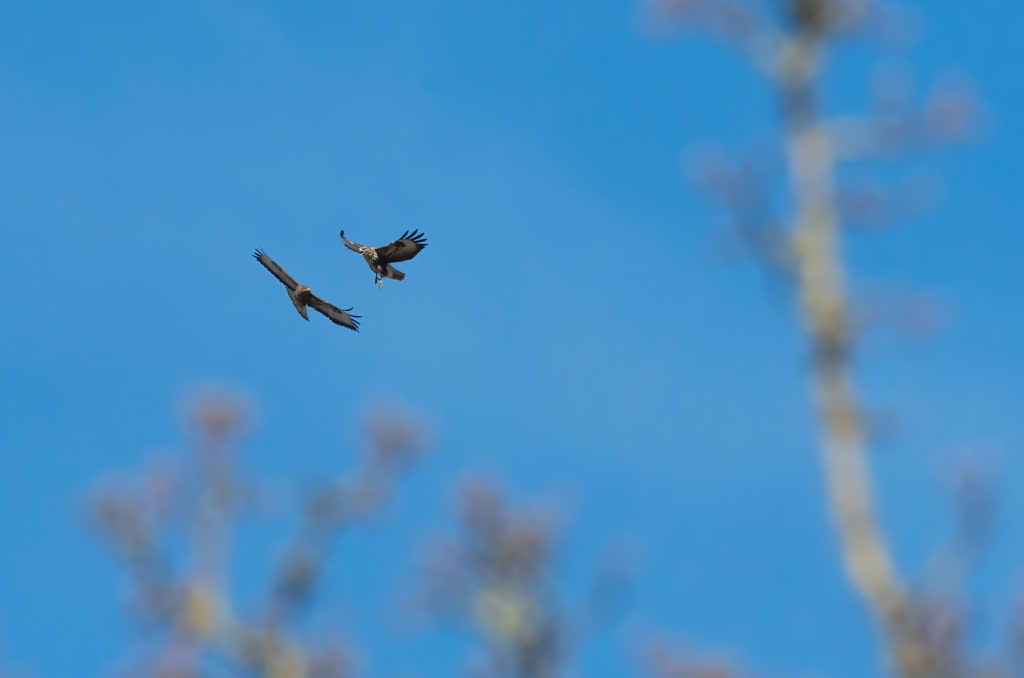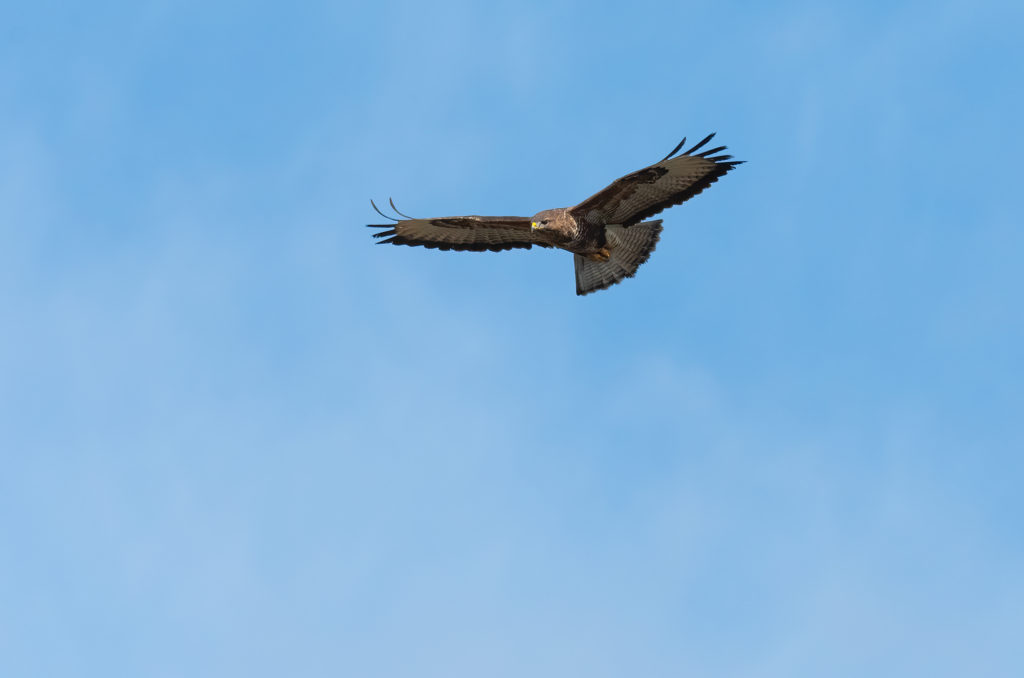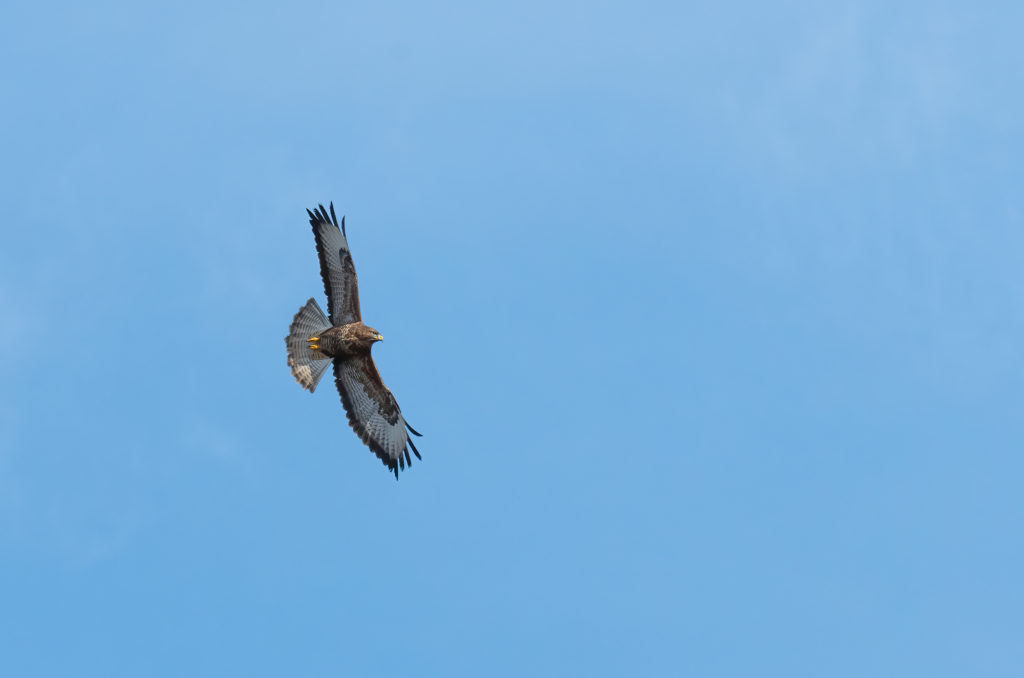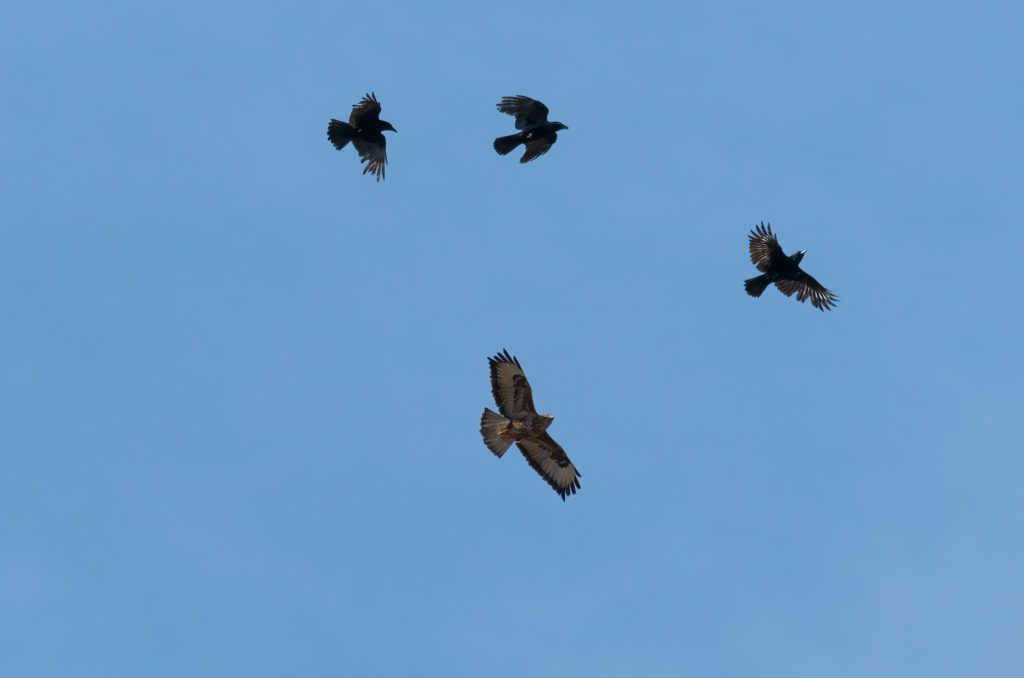My local common buzzards have been on top form this week; they even stopped traffic. Well, one car, but that driver was pretty excited when he drove away.
I spend a fair amount of time on my local patch looking skywards, and probably an equal amount of time telling people why I spend so much time staring up at the clouds. The answer is always the buzzards. On the day in question, there were four circling each other. They passed through light and shadow, gliding upwards. The ratio of wing area to body mass is comparatively large for these birds, which means they are well adapted to capitalise on any air forced up by the landscape or rising thermals. Without needing to flap their wings, they can be soaring hundreds of metres above your head in moments. A swirl of brown feathers and plaintive mewing calls. Each bird allows the others enough space to soar on the thermals and updraughts. That was until one got a bit too close for comfort to another; it was onto its back in a flash, feet raised in threat. That is as close as you would want to get to those talons.

‘What are they?’ I hadn’t heard the car engine rumbling away behind me.
‘Buzzards. All four of them’. I lowered my camera and met the shocked expression of the driver with a nod and a big grin. I love watching people’s reactions to the wildlife on this little patch of nature between the houses and the train line.
‘That must be unusual?”
‘Nope, they’re here all the time’. I couldn’t resist telling him that part.
‘Wow, I’ll keep a lookout for them then’.
After briefly telling him how to identify them, he drove away. Hopefully, he will be able to enjoy another four-buzzard aerial acrobatics display at the end of his road again soon. Hopefully, he will tell someone else about it. This excitement gives me hope for my local wildlife. Surely if enough local people care, we can keep safe all the amazing creatures we have the privilege of sharing this urban space with.
The buzzard may be the UK’s most common bird of prey, but I still get a thrill like that every time I have the opportunity to photograph one. They also happen to be a great bird to practice photographing in flight, provided they aren’t soaring too high.

If you struggle to capture decent images of birds in flight, you are not alone. I struggled for a long time but have improved my success rate with a few techniques that I want to cover briefly.
Firstly, adjust your settings. Stop down your aperture, increase ISO and switch to continuous focusing using the centre focus point. Using these settings has massively increased my chances of getting the bird sharp and correctly exposed because I have allowed myself a bit of room for error. If I decide to shoot wide open with a shallow depth of field, I run the risk of getting the tail in focus rather than the head. At f/10, I have more depth of field to play with and am more likely to have the majority of the bird in focus. If I select a low ISO, even on a bright day, my shutter speed may be too slow (as I shoot in aperture priority), and the bird may not be pin sharp. The continuous focus using the central focus point gives my camera the best chance of locking and holding focus, which is preferable to me trying to refocus while following the bird’s path. It took me a long time to trust that my camera was tracking the bird, but discovering that it does is a game-changer for me – and not just for photographing birds in flight. I encourage you to play around with your settings and find what works for you and your camera set-up.

Secondly, try to predict the flight path of the bird. If you try to follow the bird with your camera, you will always be behind the movement and become frustrated. This is particularly important when you have zoomed in as tight as possible, as it is easy to lose your subject once it has sped out of the frame. Buzzards are great to practice on as they tend to wheel quite slowly and circle an area repetitively, giving you the ability to predict the movement and take the time to lock focus. Birds that usually fly in straight lines, such as cormorants, are also perfect for practising your panning technique – freezing the movement or capturing a bit of motion blur.

Thirdly, be aware of the background. Your camera will easily lock focus on a bird in flight if there is plenty of contrast between the animal and the background. So, shooting a grey bird flying in front of grey clouds on an overcast day will be much harder than it was for me to get the images above.
Finally, don’t worry if your lens isn’t that long and your bird seems small in the frame. Provided your camera can produce images with a good amount of pixels, you can always crop the image, particularly if you are only planning to use it online.
Oh, and practice, practice, practice…and let me know how you get on!

